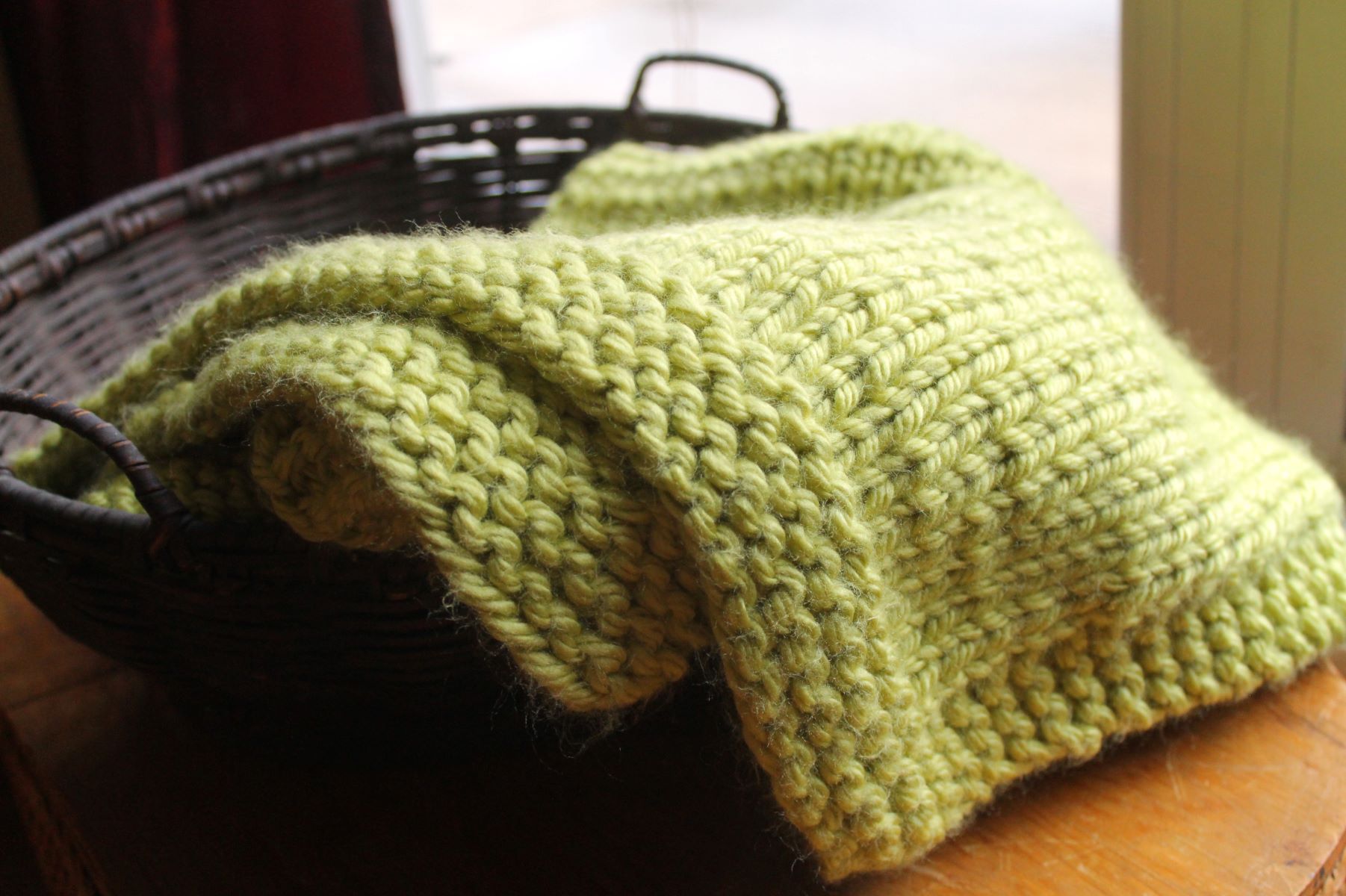

Articles
How To Swaddle A Baby With A Blanket
Modified: August 28, 2024
Learn the best techniques and step-by-step instructions for swaddling a baby with a blanket in our informative articles.
(Many of the links in this article redirect to a specific reviewed product. Your purchase of these products through affiliate links helps to generate commission for Storables.com, at no extra cost. Learn more)
Introduction
Swaddling is a practice that has been used for centuries to soothe and comfort babies. It involves wrapping a blanket snugly around a baby’s body to mimic the feeling of being in the womb. This gentle and secure cocoon-like environment can help newborns feel safe and calm, promoting better sleep and reducing fussiness.
In addition to the soothing benefits, swaddling can also prevent a newborn’s startle reflex from waking them up. This reflex occurs when babies feel a sudden movement or change in their surroundings, causing them to flail their arms and legs. By keeping their limbs securely wrapped, swaddling creates a sense of security and helps babies stay asleep longer.
Choosing the right blanket for swaddling is crucial. It should be made of a lightweight and breathable fabric to ensure the baby does not overheat. Organic cotton blankets or muslin wraps are popular choices as they are soft, gentle on the baby’s skin, and allow for proper airflow.
Preparing the baby for swaddling involves choosing the right time, ensuring the baby is calm and content, and creating a comfortable space. It’s essential to have a flat and safe surface, such as a changing table or bed, to lay the baby on while wrapping them in the blanket.
In this article, we will provide a step-by-step guide on how to swaddle a baby with a blanket. We will also share important tips and safety guidelines to ensure the process is done correctly, and both the baby and caregiver are comfortable and safe.
Key Takeaways:
- Swaddling with a blanket promotes better sleep, reduced fussiness, and enhanced motor control for babies. Choosing the right blanket and following safety guidelines are crucial for a safe and comforting swaddling experience.
- Pay attention to your baby’s cues and signs to determine when it’s time to transition out of swaddling. Gradually transitioning to sleep sacks or wearable blankets can support your baby’s comfort and development.
Read more: How Big Is A Swaddle Blanket
Benefits of Swaddling
Swaddling offers numerous benefits for both babies and parents. Here are some of the key advantages:
1. Better Sleep:
Swaddling helps infants feel secure and cozy, promoting better sleep patterns. By mimicking the snugness of the womb, it helps calm babies and reduces their startle reflex, allowing them to sleep for longer stretches at a time. This means more restful nights for both baby and parents.
2. Reduced Fussiness:
Many newborns experience fussiness, especially during the evening hours. Swaddling, with its gentle and comforting pressure, can help soothe babies and reduce their fussiness. It mimics the feeling of being held, providing a sense of security and warmth that can ease crying and restlessness.
3. Easier Transition to Sleep:
Swaddling can aid in creating a bedtime routine and signaling to the baby that it’s time to sleep. When done consistently, swaddling can become a cue for relaxation and promote a smoother transition to sleep.
Read more: What Is A Swaddling Blanket
4. Enhanced Motor Control:
Swaddling helps limit the jerky movements and flailing limbs that newborns often exhibit. By keeping their arms and legs snugly wrapped, it can provide a sense of containment that allows babies to focus on developing their motor skills in a controlled manner.
5. Facilitates Breastfeeding:
Swaddling can facilitate breastfeeding by promoting a calm and relaxed state in the baby. It reduces distractions and the startle reflex, allowing the baby to concentrate on feeding and latch more easily.
6. Comfort for Babies with Colic:
For babies with colic or digestive discomfort, the cozy and secure feeling of swaddling can offer relief. The gentle pressure can help soothe their tummy and alleviate some of the discomfort associated with colic.
7. Bonding Time:
Swaddling provides an opportunity for parents and caregivers to bond with their baby. The gentle act of wrapping the baby in a blanket and providing warmth and security fosters a sense of connection and trust between the caregiver and the baby.
While the benefits of swaddling are significant, it is important to note that not all babies enjoy or respond positively to swaddling. It is crucial to recognize and respect the individual preferences and comfort levels of each baby.
Choosing the Right Blanket
When it comes to swaddling, choosing the right blanket is essential to ensure the comfort and safety of the baby. Here are some factors to consider when selecting a blanket for swaddling:
1. Material:
Opt for blankets made of soft and breathable materials like organic cotton or muslin. These fabrics are gentle on a baby’s delicate skin and allow air to circulate, reducing the risk of overheating.
2. Size:
Choose a blanket that is large enough to securely wrap around the baby. The ideal size is usually between 40 to 48 inches square, as it provides enough fabric to create a snug and secure swaddle.
3. Stretchiness:
Look for a blanket with some stretch to it, as this will allow you to achieve a tight and secure swaddle. A little bit of give in the fabric ensures that the swaddle stays in place without restricting a baby’s movement too much.
Read also: 13 Incredible Swaddle Blanket for 2025
4. Weight:
Consider the weight of the blanket based on the season and room temperature. A lightweight blanket is suitable for warmer climates or when the room is well-heated, while a slightly thicker blanket may be appropriate for cooler temperatures.
5. Easy to Clean:
Choose a blanket that is easy to clean and maintain. Opt for machine-washable blankets, as newborns can be messy, and frequent washing is necessary to keep the blanket fresh and hygienic.
6. Safety Considerations:
Avoid blankets with loose threads or embellishments that can present a choking hazard. It is also essential to follow safe sleep guidelines and ensure that the blanket does not cover the baby’s face or restrict their breathing.
Remember, it’s always best to use blankets specifically designed for swaddling, as they often come with helpful markings or fastenings that make it easier to achieve a secure swaddle. Additionally, swaddle sacks or wraps with velcro or snaps can provide a convenient and foolproof way to swaddle your baby.
By taking these factors into account, you can select a blanket that is not only safe and comfortable but also suited to your baby’s individual needs and preferences.
How to Prepare the Baby for Swaddling
Before you begin swaddling your baby, it’s important to create a calm and comfortable environment. Here are the steps to prepare both the baby and the space for swaddling:
Read more: How To Store Baby Blankets
1. Choose the Right Time:
Select a time when your baby is calm and content. Avoid swaddling right after a feeding or when the baby is already overtired or fussy.
2. Find a Safe and Flat Surface:
Choose a safe and flat surface, such as a changing table or bed, to lay the baby on for swaddling. Make sure it is clean, free of any obstructions, and provides enough space to comfortably maneuver.
3. Gather the Necessary Supplies:
Have everything you need within reach before you start. This includes a clean and appropriate-sized blanket, any fasteners or accessories you plan to use, and any additional items like a pacifier or soft toy that may help soothe the baby.
4. Ensure Proper Room Temperature:
It’s important to maintain a comfortable room temperature for the baby during swaddling. The room should be warm enough to prevent the baby from getting cold but not excessively hot to avoid overheating. Aim for a temperature between 68-72°F (20-22°C) for optimal comfort.
Read more: How To Make A Baby Blanket
5. Check for Cleanliness and Hygiene:
Ensure that your hands are clean before handling the baby or the swaddling blanket. It’s also important to choose a clean blanket or wash it before use to maintain hygiene.
6. Encourage Calmness and Relaxation:
Talk soothingly to your baby and establish eye contact to help them feel secure. Gently stroke their arms, legs, or back to promote relaxation and calmness before swaddling them.
7. Allow for Breaks and Adjustments:
If your baby becomes unsettled or shows signs of discomfort during the swaddling process, pause and assess the situation. Adjust the blanket or reposition the baby as needed to ensure their comfort and safety.
By following these steps, you can create a conducive environment and set the stage for a successful and soothing swaddling experience for your little one.
Step-by-Step Guide on Swaddling a Baby with a Blanket
Swaddling a baby with a blanket may seem daunting at first, but with a little practice, it can become a routine task. Here is a step-by-step guide to help you swaddle your baby safely and securely:
1. Lay the blanket flat:
Start by laying the blanket on a flat surface in a diamond shape, with one corner pointing up and one corner pointing down.
2. Fold the top corner down:
Take the top corner of the blanket and fold it down towards the center, leaving enough space at the top to place the baby’s head. This creates a straight edge across the top of the blanket.
3. Place the baby on the blanket:
Position the baby on their back in the center of the blanket, with their shoulders aligned with the folded edge.
4. Secure one arm:
Take one side of the blanket and bring it across the baby’s chest. Tuck it under the opposite arm, making sure to keep the arm snugly against the baby’s body.
Read more: How Big Is A Crochet Baby Blanket
5. Secure the other arm:
Take the remaining side of the blanket and bring it across the baby’s chest, tucking it under the already wrapped arm. Again, ensure that the arm is snugly secured against the baby’s body.
6. Fold the bottom up:
While holding the bottom of the blanket, fold it up towards the baby’s chest. Make sure there is enough room for the baby to bend their hips and knees comfortably.
7. Secure the blanket:
Bring one side of the blanket over the baby’s chest and tuck it underneath their body. Then take the remaining side and fold or twist it snugly over the first side to secure the swaddle. The blanket should be snug but not too tight, allowing room for the baby to move their legs.
8. Check the position:
Ensure that the baby’s hips can move and that their legs can bend freely. Their legs should be able to spread apart naturally, which is important for healthy hip development.
Remember to always place your baby to sleep on their back and monitor them while they are swaddled to prevent overheating or any discomfort. If your baby shows signs of distress or discomfort while swaddled, it may be a sign that they prefer a different sleep arrangement or swaddle style.
With practice, swaddling your baby with a blanket will become easier and you will find the method that works best for you and your little one.
Read more: How To Start Knitting A Baby Blanket
Important Tips and Safety Guidelines
While swaddling can be a beneficial practice, it’s essential to prioritize the safety and comfort of your baby. Here are some important tips and safety guidelines to keep in mind:
1. Follow Safe Sleep Practices:
Always place your baby on their back to sleep, whether swaddled or not. This reduces the risk of sudden infant death syndrome (SIDS). Keep the baby’s head and face uncovered at all times to ensure proper airflow.
2. Be Mindful of Overheating:
Monitor your baby’s body temperature to prevent overheating. Use lightweight and breathable materials for swaddling blankets and dress the baby in appropriate clothing to maintain a comfortable body temperature.
3. Ensure Proper Swaddle Tightness:
The swaddle should be snug, but not too tight. A swaddle that is too loose can unravel and pose a suffocation risk, while one that is too tight can restrict the baby’s movement and cause discomfort. Use the “two-finger rule” – you should be able to comfortably slide two fingers underneath the swaddle to ensure it’s not too tight.
Read more: How To Make A Taggie Blanket For A Baby
4. Monitor Hip Health:
Make sure that the baby’s hips can move and that their legs can bend freely when swaddled. The swaddle should allow the baby’s legs to spread apart naturally, promoting healthy hip development. A swaddle that is too tight can lead to hip dysplasia or other hip-related issues.
5. Stop Swaddling When It’s No Longer Effective or Safe:
As your baby grows and becomes more active, they may start to break free from the swaddle or show signs of being ready to transition out of it. It’s important to recognize these cues and discontinue swaddling when necessary to prevent the baby from rolling onto their stomach or face, which increases the risk of suffocation.
6. Always Supervise the Baby:
When the baby is swaddled, it’s crucial to supervise them to ensure their safety and monitor for any signs of distress or discomfort. Never leave a swaddled baby unattended, especially when sleeping or lying on a elevated surface.
7. Be Aware of Individual Preferences:
Every baby is unique, and while some may find swaddling soothing, others may not enjoy or respond well to it. Watch for cues and signs from your baby to determine if swaddling is comforting or if they prefer alternative methods for sleep and relaxation.
By following these tips and safety guidelines, you can create a safe and comfortable swaddling experience for your baby.
Read also: 10 Superior Baby Blanket for 2025
When to Stop Swaddling
Knowing when to stop swaddling your baby is an important consideration for their safety and development. While swaddling can be beneficial during the newborn stage, there comes a point when it becomes necessary to transition the baby out of swaddling. Here are some signs that may indicate it’s time to stop swaddling:
1. Age and Development:
Most babies can be safely swaddled from birth up to around 2 to 4 months of age. However, it’s essential to monitor your baby’s development as they grow. Once they start showing signs of rolling over or attempting to roll, it is time to stop swaddling. Rolling over in a swaddle can increase the risk of suffocation.
2. Breaking Out of the Swaddle:
As your baby becomes more active and develops more control over their limbs, they may start to break free from the swaddle. This can be a sign that they are ready to transition out of swaddling. If the baby consistently breaks out of the swaddle or becomes frustrated and agitated when swaddled, it may be time to find an alternative sleep arrangement.
3. Increased Mobility:
When your baby starts to show increased mobility, such as rolling onto their stomach during supervised tummy time or attempting to crawl, swaddling can limit their movement and potentially pose a safety risk. It’s important to allow your baby to explore and move freely to support their motor development.
Read more: How To Knit A Baby Blanket On A Round Loom
4. Disrupted Sleep Patterns:
If you find that your baby’s sleep patterns become increasingly disrupted while swaddled, it may be an indication that they are ready to transition out of the swaddle. Some babies may become more restless and wake up more frequently when they feel confined by the swaddle, and they may be more comfortable with their arms and legs free.
5. Individual Preference:
Every baby is different, and while some may enjoy the feeling of being swaddled, others may not find it comforting. Pay attention to your baby’s cues and preferences. If they appear more content and sleep better without being swaddled, it may be time to stop.
When transitioning out of swaddling, there are various alternatives to consider, such as using a sleep sack or wearable blanket that allows for more freedom of movement while still providing a comforting and secure feeling. Gradually transitioning away from the swaddle can help the baby adjust to sleeping without it.
Remember, the decision to stop swaddling should be based on your baby’s individual needs and safety. Consulting with your pediatrician can provide additional guidance and support as you navigate this transition.
Conclusion
Swaddling a baby with a blanket can be a comforting and beneficial practice, providing them with a sense of security and promoting better sleep. However, it is crucial to prioritize safety and ensure that swaddling is done correctly. By following the step-by-step guide, choosing the right blanket, and adhering to important tips and safety guidelines, you can create a safe and comfortable swaddling experience for your little one.
Remember that every baby is unique, and while swaddling may be soothing for some, it may not be suitable or preferred by others. It’s essential to listen to your baby’s cues and adjust their sleep arrangements accordingly. As your baby grows and develops, pay attention to signs that indicate it’s time to transition out of swaddling, such as increasing mobility or the ability to roll over.
When the time comes to stop swaddling, there are various alternatives available, such as sleep sacks or wearable blankets, that provide a sense of security while allowing for more freedom of movement. Gradually transitioning away from the swaddle can help your baby adjust to sleeping without it and support their ongoing development.
Always remember to prioritize safe sleep practices, such as placing your baby on their back to sleep, ensuring proper room temperature, and monitoring their comfort and well-being while swaddled. Regularly check for any signs of discomfort or the need for adjustments.
By understanding the benefits, following proper techniques, and staying attuned to your baby’s needs, you can create a sleep environment that fosters comfort, security, and healthy development.
Please note that the information provided in this article is for educational purposes only and should not replace professional medical advice. If you have any concerns or questions about swaddling, consult with your pediatrician or healthcare provider.
Frequently Asked Questions about How To Swaddle A Baby With A Blanket
Was this page helpful?
At Storables.com, we guarantee accurate and reliable information. Our content, validated by Expert Board Contributors, is crafted following stringent Editorial Policies. We're committed to providing you with well-researched, expert-backed insights for all your informational needs.




